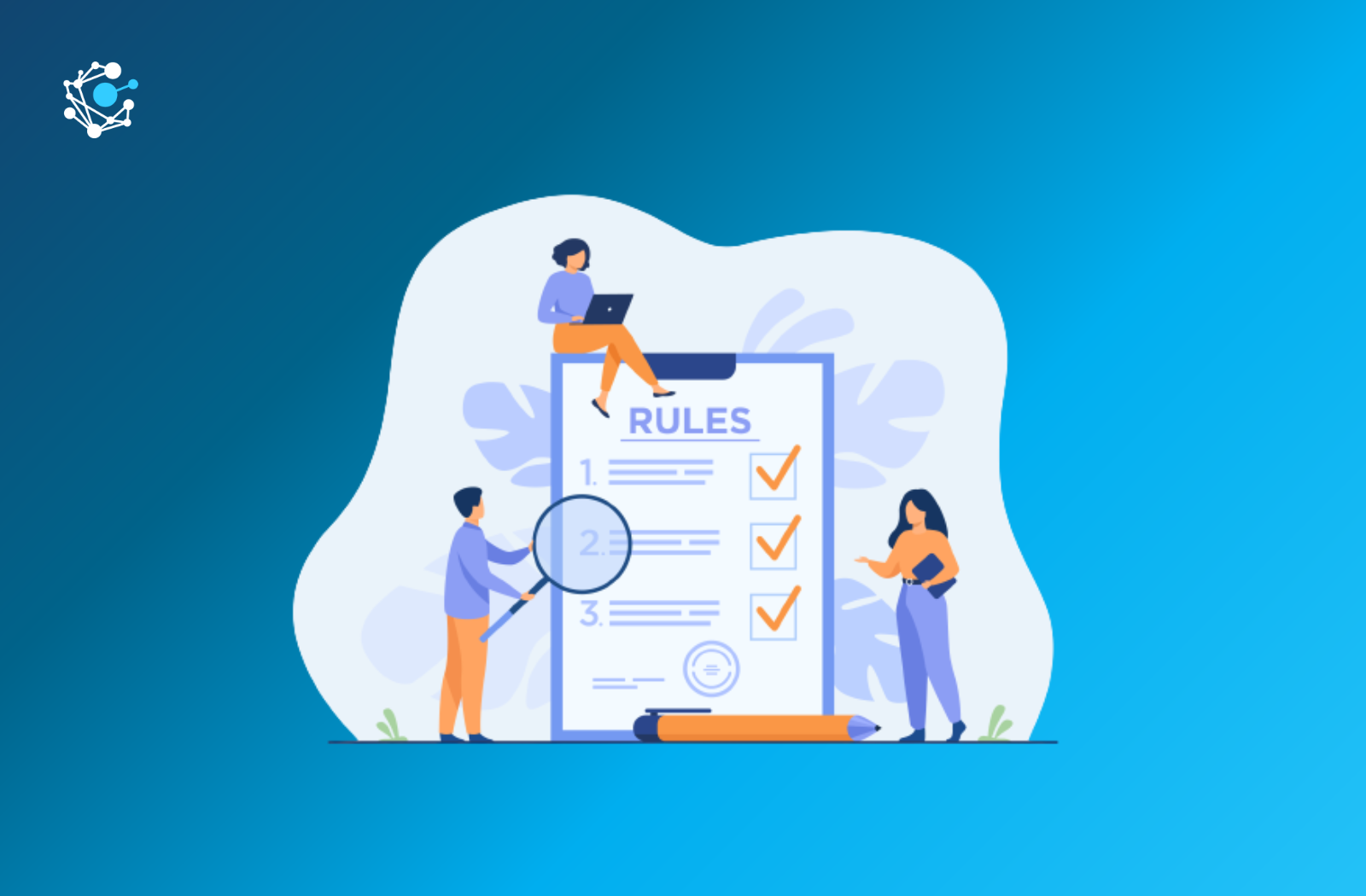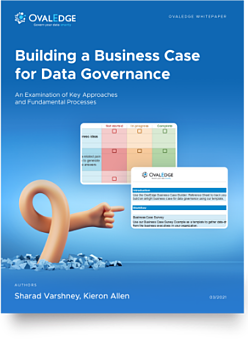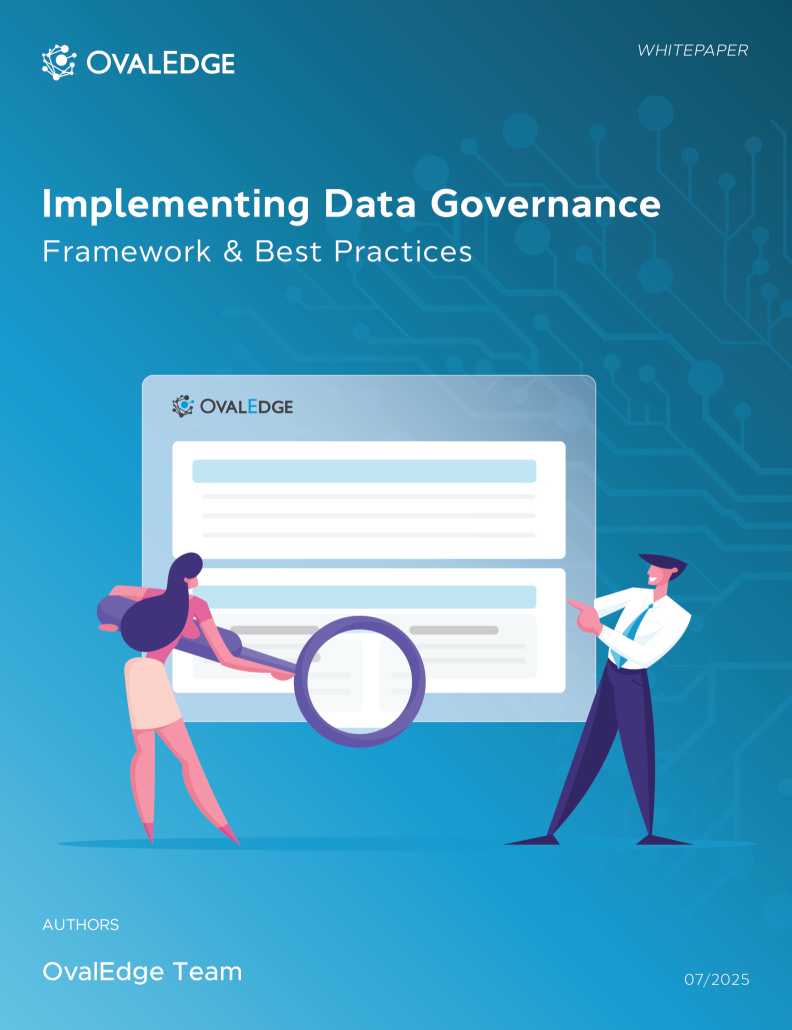Table of Contents
Data Observability: Key to Reliable and Trustworthy Data
It’s pretty much a cliché to say these days, but data really is the foundation of modern business. Not only is there an eye-watering amount of it, but with increased pressure from consumers and governments, data governance and regulation are as important as it’s ever been.
This shines a spotlight on how organizations maintain and monitor their data, as well as how they’re ensuring data quality.
Until recently, developers were able to use application performance management (APM) tools like AppDynamics and Datadog to investigate issues with data. But it’s clear that a more proactive approach is needed, with tools to match.
Data Observability has entered the chat
If you want to see how OvalEdge can help you to improve your Data Observability, book a demo here with our team
What is Data Observability?
In the simplest terms possible, Data Observability is a way to identify data quality issues and track data lineage, with the help of tools.
For a more comprehensive summary, Gartner has done a good job of defining it:
Data observability is the ability of an organization to have a broad visibility of its data landscape and multilayer data dependencies (like data pipelines, data infrastructure, data applications) at all times with an objective to identify, control, prevent, escalate and remediate data outages rapidly within expectable SLAs. Data observability uses continuous multilayer signal collection, consolidation and analysis to achieve its goals as well as to inform and recommend better design for superior performance and better governance to match business goals.
Data Observability is a method that can be used to solve a variety of data management problems. Every company is different, and so is their data, but however you’re set up, Data Observability has the potential to make a big difference.
Why is Data Observability Important for Business?
Companies rely on increasingly complex data solutions, which makes it harder and harder to maintain consistent data quality. APM tools are good for investigating issues, but this is often too late.
There are a number of issues that if not caught early, can cause a lot of problems:
- Inaccurate data
- Schema issues
- Inconsistent data
- Duplicate data
- Hidden data
These data quality issues can cost companies both time and money. For example, 77% of businesses say that inaccurate data hurt their ability to respond to market changes during the pandemic, according to Experian.
This is huge, and highlights how impactful Data Observability could be if implemented effectively.
Data observability tools use advanced technology like automated monitoring, root cause analysis, data lineage, etc. These not only help save time and money, but they can also have a positive impact on the day-to-day running of your company.
Your teams can run more effectively, as they’re not held up by data issues, or bogged down investigating reported issues.
And your customers will be happier as there is less likely to be as much downtime, and their data is in safer hands.
Latest Data Observability Trends for 2026
-
Data observability is rapidly evolving, integrating artificial intelligence and automation to provide real-time insights, anomaly detection, and predictive maintenance across all layers of IT and data systems.
-
AI-powered observability platforms now correlate logs, metrics, and traces—allowing organizations to catch issues earlier and optimize resource usage.
-
The adoption curve is rising: in 2025, more than 50% of organizations have consolidated tools to streamline processes and cut downtime.
How Data Observability Benefits Data-Driven Organisations
-
Data observability drives value for data-driven organizations by improving data accuracy, reducing downtimes, and enabling early detection of data pipeline issues.
-
It allows teams to proactively address data health concerns, correlates system behavior with business outcomes, and prevents operational disruptions.
-
These practices foster growth, efficiency, and agile decision-making, ensuring reliable data delivers meaningful business insights.
Data Catalog Tools: Essential Features in 2026
-
Leading data catalog tools such as Ataccama, BigID, and Collibra offer advanced automation for data discovery, quality monitoring, lineage tracking, and metadata management.
-
Features now include AI-assisted categorization, user-friendly search via natural language processing, integration with over 150 data sources, and policy enforcement for data governance.
-
These tools are crucial for driving compliance and supporting business user empowerment.
Is Data Observability Part of Data Governance?
When we talk about Data Observability, it’s important to remember that it’s only one part of Data Governance.
For reference, this is the definition of Data Governance from our Ultimate Guide:
Data governance is the process of organizing, securing, managing, and presenting data using methods and technologies that ensure it remains correct, consistent, and accessible to verified users.
Even though Data Observability sets the framework of Data Governance, it also helps to solve larger data management challenges.
Using tools to clearly understand the health and state of your data will make it significantly easier to meet your targets and ensure you’re sticking to your guidelines.
You can use things like alerting to proactively tackle quality issues, and use advanced automation to identify problem areas before anything goes wrong.
Best Data Governance Tools and Platforms for 2026
-
Organizations seeking comprehensive governance ecosystems are deploying all-in-one platforms capable of batch and real-time data management, integrating observability with cataloging, lineage, and quality control.
-
Top tools combine robust policy automation, compliance, and seamless integrations to cover the entire data lifecycle. Investing in best-in-class governance solutions ensures trust, transparency, and secure data access.
How OvalEdge Supports Data Observability
There are a lot of Data Observability tools available, but most only focus on a small subset of features you need.
With OvalEdge, we’ve consciously built a comprehensive hybrid solution that solves a wide variety of data management problems. This includes key tools you need to achieve a high level of Data Observability.
Data Catalog
It’s impossible to implement effective Data Observability without having a holistic view of all your data sources. Without this, you can’t reliably compare data or identify cross-platform issues.
This is exactly what our Data Catalog solves. It connects with all of your data sources, and makes them all accessible from one place. From databases to custom applications, everything can be viewed and queried from OvalEdge.
This essentially becomes your Data Observability hub, where you can manually analyze your data and identify improvements.
Monitoring & Rules
Manually locating issues can be useful when investigating individual issues, but it’s also important to take a proactive approach to data quality.
This is why monitoring is so important. You can define rules that automatically catch data quality issues, and alert you to them. We talked before about scheme issues, inconsistencies, duplicate data, etc. You can create rules that monitor and catch these issues as they’re introduced.
This not only means you can prevent further issues, but also means you always have a baseline level of confidence in your data quality. Which makes it easier to make crucial business decisions.
Automation & AI
As well as crawling your data sources to build your data catalog, OvalEdge has a number of other automations that make it easy to implement Data Observability.
It profiles your data and collects useful statistics about your data, based on your bespoke needs and configuration. It also crawls the data, and combines this information to automatically identify relationships and patterns.
For more advanced automation, you also get an AI Assistant you can train to organize your data. We also use AI to detect and mask PII, in line with governance and regulation restrictions.
It’s time to get a better view
As you’ve hopefully learned from this article, Data Observability is critical in the modern age of data. By using tools to improve your view, and be more proactive, you can escape the existing struggle, highlighted here by Sanjeev Mohan:
Data scientists spend 80% of their time wrangling or munging the data, rather than putting their hard-earned PhDs to use to build predictive models
By using automation, monitoring, and many more key tools, you can free up your data scientists to do the things they’ve actually trained to do.
It won’t just make your team happier. You’ll be putting smiles on the faces of your accounts team, your investors, and most importantly, your customers.
FAQ’s
-
What is data observability and why is it important?
Data observability refers to the ability to monitor, analyze, and optimize the health and performance of your entire data ecosystem. It is important because it enables proactive issue detection, improves accuracy, and ensures reliable data delivery for decision-making.
-
How does data observability benefit data-driven organisations?
It helps organizations enhance data quality, reduce operational downtime, improve cost efficiency, detect anomalies early, and prevent bad data from impacting business outcomes.
-
What are data catalog tools and why are they necessary?
Data catalog tools organize, classify, and monitor data assets to support discovery, self-service analytics, governance, and compliance. They enable end-to-end lineage tracking and automated data quality checks.
-
What features define the best data governance tools today?
The best data governance tools combine policy automation, advanced integrations, user empowerment, AI-driven discovery, lineage, and real-time quality monitoring.
-
What should organizations look for in a data observability platform in 2026?
Key criteria include AI-driven automation, full-stack monitoring, seamless integration with data catalog and governance tools, ease of adoption, and strong security and compliance.
What you should do now
|
OvalEdge recognized as a leader in data governance solutions
.png?width=1081&height=173&name=Forrester%201%20(1).png)
“Reference customers have repeatedly mentioned the great customer service they receive along with the support for their custom requirements, facilitating time to value. OvalEdge fits well with organizations prioritizing business user empowerment within their data governance strategy.”
.png?width=1081&height=241&name=KC%20-%20Logo%201%20(1).png)
“Reference customers have repeatedly mentioned the great customer service they receive along with the support for their custom requirements, facilitating time to value. OvalEdge fits well with organizations prioritizing business user empowerment within their data governance strategy.”
Gartner, Magic Quadrant for Data and Analytics Governance Platforms, January 2025
Gartner does not endorse any vendor, product or service depicted in its research publications, and does not advise technology users to select only those vendors with the highest ratings or other designation. Gartner research publications consist of the opinions of Gartner’s research organization and should not be construed as statements of fact. Gartner disclaims all warranties, expressed or implied, with respect to this research, including any warranties of merchantability or fitness for a particular purpose.
GARTNER and MAGIC QUADRANT are registered trademarks of Gartner, Inc. and/or its affiliates in the U.S. and internationally and are used herein with permission. All rights reserved.



.webp)


